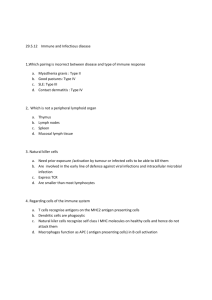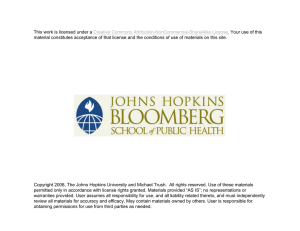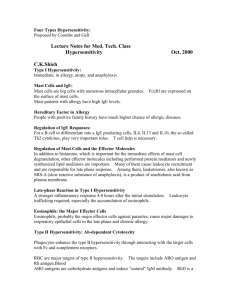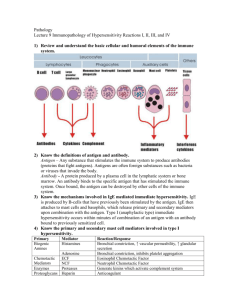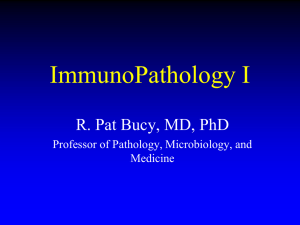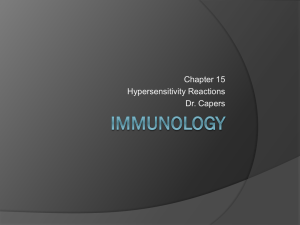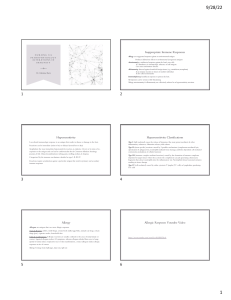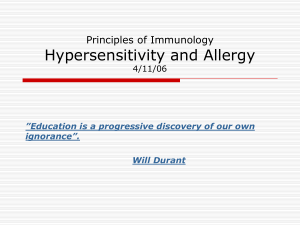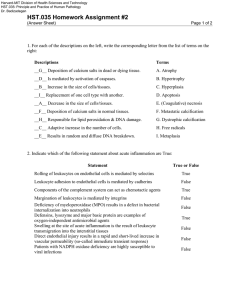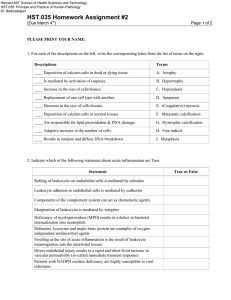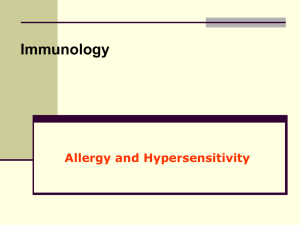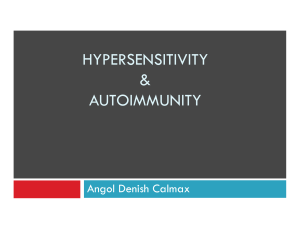• Hypersensitivity Lecture (11)
advertisement
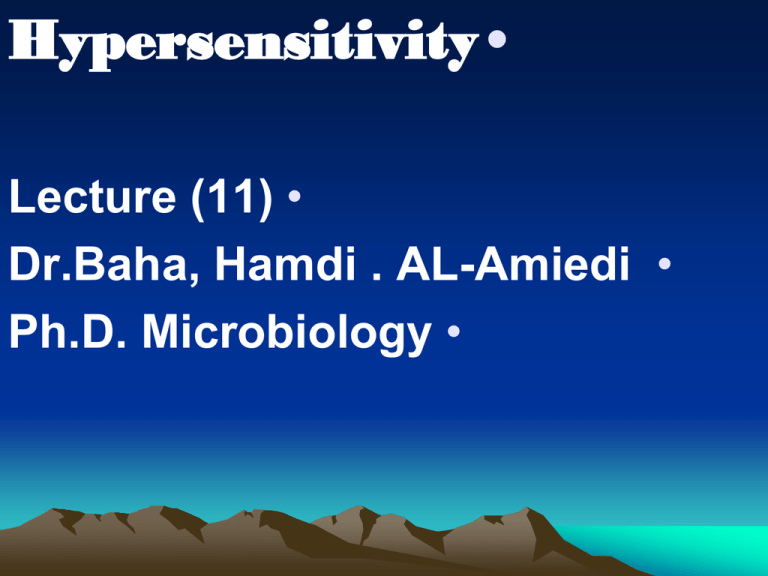
Hypersensitivity • Lecture (11) • Dr.Baha, Hamdi . AL-Amiedi • Ph.D. Microbiology • Hypersensitivty In immunity focus of attention is antigen (Killing , neutralization of toxin). in hypersensitivity focus of attention is what happens to host as a result of immune reaction. Some forms of’ immune reaction can produce sever and occasionally Fatal results. This are known hypersensitivity. Mechanisum: • The mechanisum of hypersensitivity is that • reactions that appear within minutes are mediated by freely diffusible antibody molecules ( immediate type). The other type is slow evolving responses that • are mediated by sensitized T- lymphoeytes. This cell mediated Hypersensitivity(delayed type) Coombs and Gell Classification (1969 ) They • are classified hypersensitivity reaction into (4) types on the basis of pathogenesis .It is widely used: Type I hypersensitivity – sensitization to an inhaled allergen or bee sting (Atopy,Anaphylactic) • Allergens(food, dust particles, medicines ,insect venom, mold spores, pollen) Pollen grains Mast cell Antigens which consist of foreign peptide involves the activation of mast cell (in tissue)& basinophiles (in circulation) leading to the production of IgE, upon binding of allergen to cell-associated IgE release of histamine from mast cell, basinophiles which is responsible for allergy symptoms. Once the body reexposed these occur in Atopic disease like Asthma, acezema 3 Antibodies attach to mast cell Type II hypersensitivity –(cytotoxic) immunemediated destruction of red blood cells Drug (penicillin) modified red blood cells induce the production of antibodies, because the bound drug (as Haptin) makes them look foreign to the immune system. When these antibodies are bound to them, the red blood cells are more susceptible to lysis or phagocytosis. Onset is dependent on the presence of specific antibodies. Antibody directed at cell surface • antigens activates the Complement to damage the cell cause destruction • of cell in mismatched blood transfusion or transplanted tissues or hemolytic disease under rhesus uncompatibility drug (as Haptin) penicillin ,Quinine • attach to surface of Red cell and initiate antibody formation such antibodies (lgG) may then combine with resulting hemolysis. Type III hypersensitivity – immune complex formation and deposition Immune complexes of antigen (red dots) and antibody form in target organ Immune complexes activate complement (green dots- C3a, C4a, and C5a), and mast cells (yellow cell) degranulate. Inflammation and edema occur, and organ is damaged Immune complex or toxic complex e.g. • Arthus reaction, serum sickness ..etc. In • this reaction IgG & IgM and Complement take part,it is known as • immune complex- mediated hypersensitivity Involve immediate Antibody-mediated (IgG& 1gM ) response soluble proteins, occurs in response to persistent exposure to weakly imm unogenic antigens. Antigens may be self components, • leading to autoimmume diseases Type IV hypersensitivity – delayedtype or contact Antigen (red dots) are processed by local APCs T cells (blue cells) that recognize antigen are activated and release cytokines Inflammatory response causes tissue injury. Antigen is presented by APCs to antigenspecific memory T cells that become activated and produce chemicals that cause inflammatory cells to move into the area, leading to tissue injury. Inflammation by 2-6 hours; peaks by 24-48 hours. it is delayed type of hypersensitivity in which T- • cells, lymphokine and macrophages take part e.g. tuberculin type and contact determintis, It is one of aspect cell mediated immunity .The antigen activates specifically macrophages &sensitized T-Cell leading to secretion of lymphokines. Locally the reaction is manifested by infiltration with mononuclear cell these reactions have the following characters, • Antigen stimulus is necessary. Induction • period 7-days a sensitive subject reaction occurs on exposure to specific antigen .e.g. tuberculin reaction. Delayed hypersensitivity is transsferted by • cells from lymphoid tissue, peritoneal exudates or blood lymphocytes. Two type delayed Classical or tuberculin type • Granulomatous reactions. • The End–
